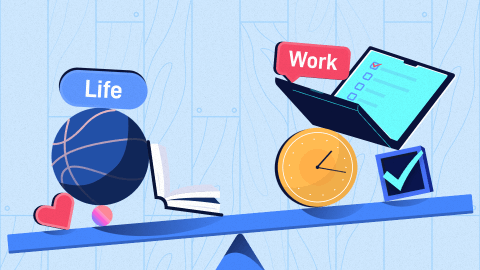Work-Life Balance Tips: How to Juggle Work and Personal Life Effectively

In today's fast-paced work culture, managing increasing workloads and rising demands has become a constant challenge. Many professionals work extended hours, often sacrificing personal time, which can negatively impact their physical and mental health, as well as their overall productivity.
This article explores the significance of achieving a healthy work-life balance and offers practical strategies to maintain equilibrium, even in demanding work environments.
What Is Work-Life Balance?
Work-life balance refers to effectively managing time and energy between professional responsibilities and personal interests, such as family, hobbies, and self-care. It is less about splitting time equally and more about maintaining a fulfilling balance that prevents one aspect from overshadowing the other.
Key Aspects of Work-Life Balance:
-
Balanced Time Management: Distributing time reasonably between work and personal life.
-
Mental and Physical Well-being: Reducing stress and maintaining a healthy lifestyle.
-
Unified Purpose: Aligning personal and professional goals for a holistic approach to life.
Why Is Work-Life Balance Important?
Enhances Mental and Physical Health
A balanced approach helps reduce stress, lowering the risk of anxiety, depression, and other health issues like cardiovascular problems.
Increases Productivity
Employees who maintain a healthy work-life balance often experience higher productivity and job satisfaction.
Improves Overall Well-being
Spending quality time with loved ones, enjoying personal hobbies, and taking breaks can significantly boost overall happiness.
Effective Strategies to Achieve Work-Life Balance
1. Utilize the Eisenhower Matrix
The Eisenhower Matrix is a priority management tool that categorizes tasks based on their urgency and importance. By focusing on urgent and important tasks, you can avoid overtime and ensure personal time is respected.
How to Implement:
Use digital tools like TickTick to create and regularly update your matrix.
2. Apply the Pomodoro Technique
Work in focused 25-minute intervals, followed by a 5-minute break. This method helps maintain concentration and prevents burnout.
How to Use:
Set a timer for work intervals and take breaks to recharge, helping you stay efficient while maintaining personal time.
3. Implement Time Blocking
Schedule dedicated time slots for work and personal activities. Time blocking helps maintain clear boundaries and better time management.
How to Apply:
Assign specific time blocks on your calendar for tasks, breaks, and personal activities.
4. Track Your Time
Maintaining a time log to record daily activities and time allocation helps identify time-wasting areas and optimize time management strategies.
How it Helps:
Analyzing time logs can help balance workload and prevent personal time intrusion.
5. Learn to Say 'No'
Politely declining non-essential tasks protects your time and energy, allowing you to focus on what truly matters.
Practical Tip:
Assess the priority of each request before committing.
6. Set Clear Boundaries
Create a clear distinction between work and personal life to prevent overlap and reduce stress.
Why It's Important:
Clear boundaries reduce work's interference with personal life, enhancing overall life quality.
7. Develop Hobbies and Interests
Engage in activities that help you unwind and recharge outside of work.
How it Helps:
Pursuing hobbies improves mental health and adds variety to your routine.
Conclusion
Achieving work-life balance is an ongoing process that requires reflection, adjustment, and commitment. By adopting these strategies, you can cultivate a more balanced, satisfying, and productive lifestyle. Start today—prioritize your well-being and create a balanced life that truly works for you!